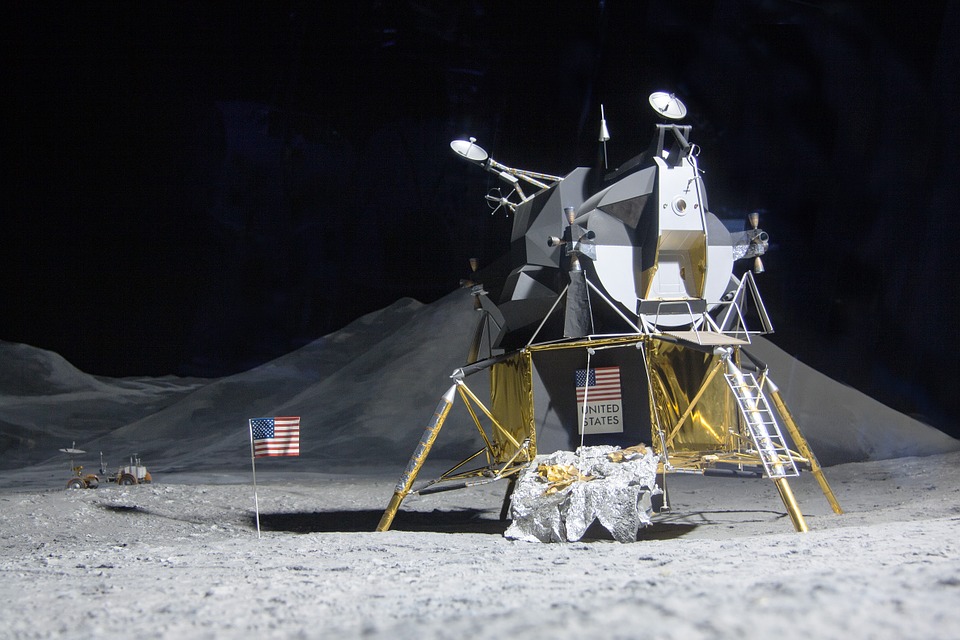Following the historic Apollo 11 mission, conspiracy theories have floated around whether or not the mission was real. A space center in the United Kingdom was able to refute this theory with the use of one of its main talking points.
One of the popular so-called indicators that conspiracy theorists use to point out that the Apollo 11 mission was faked was that of the US flag planted on the lunar surface. Knowing that there is no wind nor an atmosphere on the lunar surface, the flag still appeared to be waving and in motion. The conspiracy theories have constantly been refuted over the years, including the so-called indicator in the form of the US flag flapping or waving. In actuality, the flag was not waving or flapping at all, but the work of the astronauts.
This was answered by the UK National Space Center in Leicester, who said that the flag’s “movements” were caused by the astronauts that planted it there, Neil Armstrong and Buzz Aldrin. “The flag was disturbed as it was planted in the ground and kept this bent shape because of the lack of strong gravity on the Moon,” said the Center. “In video footage of the flag being planted on the Moon’s surface, it also appears to wave back and forth. This is because when astronauts were planting it, they rotated it back and forth to better dig into the lunar soil, which of course made the flag ripple like a pendulum -- like a breeze.
The Center went on to note that there is a lot of video footage that can refute the conspiracy theories surrounding the flag and the mission.
Meanwhile, more on the Apollo 11 mission, at the time, Armstrong took one more sample of the lunar surface prior to his immediate return to Earth. The last-minute sample he collected, as revealed in a documentary, “Apollo’s Most Important Discovery” turned out to reveal a little more about the formation of the Moon. Further analysis of the sample, they found bits of white rock that scientists initially believed were anorthosite, turned out to be something referred to as “regolith,” that suggested that meters of the lunar surface had been ground up due to previous asteroid impacts.



 NASA Partners with Katalyst to Save Swift Observatory with Innovative Docking Mission
NASA Partners with Katalyst to Save Swift Observatory with Innovative Docking Mission  Lost in space: MethaneSat failed just as NZ was to take over mission control – here’s what we need to know now
Lost in space: MethaneSat failed just as NZ was to take over mission control – here’s what we need to know now  SpaceX Starship Test Flight Reaches New Heights but Ends in Setback
SpaceX Starship Test Flight Reaches New Heights but Ends in Setback  Lab-grown meat: you may find it icky, but it could drive forward medical research
Lab-grown meat: you may find it icky, but it could drive forward medical research  Trump Signs Executive Order to Boost AI Research in Childhood Cancer
Trump Signs Executive Order to Boost AI Research in Childhood Cancer  Blue Origin’s New Glenn Achieves Breakthrough Success With First NASA Mission
Blue Origin’s New Glenn Achieves Breakthrough Success With First NASA Mission  Is space worth the cost? Accounting experts say its value can’t be found in spreadsheets
Is space worth the cost? Accounting experts say its value can’t be found in spreadsheets  Neuren Pharmaceuticals Surges on U.S. Patent Win for Rare Disorder Drug
Neuren Pharmaceuticals Surges on U.S. Patent Win for Rare Disorder Drug  Eli Lilly’s Inluriyo Gains FDA Approval for Advanced Breast Cancer Treatment
Eli Lilly’s Inluriyo Gains FDA Approval for Advanced Breast Cancer Treatment  Trump and Merck KGaA Partner to Slash IVF Drug Costs and Expand Fertility Coverage
Trump and Merck KGaA Partner to Slash IVF Drug Costs and Expand Fertility Coverage  FDA Lifts REMS Requirement for CAR-T Cell Cancer Therapies
FDA Lifts REMS Requirement for CAR-T Cell Cancer Therapies  Trump Administration to Launch Autism Initiatives Targeting Acetaminophen Use and New Treatment Options
Trump Administration to Launch Autism Initiatives Targeting Acetaminophen Use and New Treatment Options 































